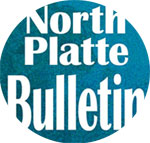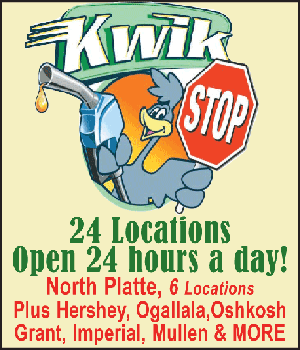As corn planting season is underway, Larry and Ken Kennedy of Sutherland is using some of the latest equipment.
Larry Kennedy took a little time on a recent afternoon to show us his tractor and planter as he serviced it at his shop. He had finished planting near Paxton and was getting ready to head out to fields in McPherson County the next morning.
The Kennedy Brothers farm raise popcorn and field corn in somewhat equal proportions, as well as soybeans. The popcorn is marketed in Colorado and Mexico.
Soybeans are planted every third year in rotation with corn crops in the interests of soil health, adding nitrogen to the ground as well as another product to the farm’s output.
Their 24-row planter precisely precisely places seeds 6-7 inches apart in irrigated soils, thanks to an array of electric and hydraulic motors and lines that connect hoppers full of seeds and fertilizer to each row unit.
Larry said the John Deere Exact Emerge 1775 planter can cover some 350 acres on a good day.

The data for the operation lies within two onboard computers. One determines the path of the tractor and keeps it on track. Another computer determines the rates of planting and fertilizing.
Larry said the planter will work accurately at up to 12 mph in ideal conditions. He prefers 8-9 mph.
Data from past harvests that is collected each fall by monitors on the combine, identifies the most productive soils in each field. That information is relayed to the planter, which adjusts accordingly, planting more seeds and applying more fertilizer in productive soils, and scaling back in others.
Larry said once the planter is programed, it will adjust automatically to each part of the field, even dryland corners of a pivot-irrigated field. With field size programed into the computer, the operator does not have to touch any controls. The planter and the tractor adjust automatically.
Larry rides in the cab, watching read-outs on the computer screens. He only takes the steering wheel to turn the equipment around at the end of rows.

And, he said the tractor could be programmed to turn around too, if he decided to take that route.
GPS receivers keep track of the machine’s precise location in the field. He said once the GPS data of the field boundary is mapped in the computer, the tractor drives itself on the first trip around the field, even though the boundaries might be irregular.
An electric generator mounted on the tractor’s PTO shaft powers the electric motors on the planter. There are two motors on each row unit. One motor meters the seeds and the other conveys the seed to the soil, dropping each seed just above the open furrow. The planter also applies a little liquid starter fertilizer in the seed trench, plus more fertilizer on top of the furrow to feed the plant as it emerges.
The Kennedys fertilize two more times during the growing season, maximizing the efficiency of each application, minimizing leaching and applying fertilizer when the crop needs it.
As Larry watches the monitors, he can call for adjustments from his agronomist. It just takes a few minutes. The agronomist can check the specifications on his computer, and if necessary, send updated information through the cloud to the tractor.
Larry said the machinery doesn’t break down often, but when it does, it can be difficult to locate the trouble. For instance, a small pin on one of the electric plugs recently jammed, delaying planting for a considerable amount of time until the problematic plug was found.
During electronic breakdowns, including software glitches, he must depend on service technicians in North Platte. But for the most part, the equipment operates as intended, enabling one primary farmer to plant thousands of acres during the planting season.
This report was first published in the Bulletin’s April 24 print edition.
© 2024 The North Platte Bulletin. All rights reserved.

















































Log in to post Talk Back